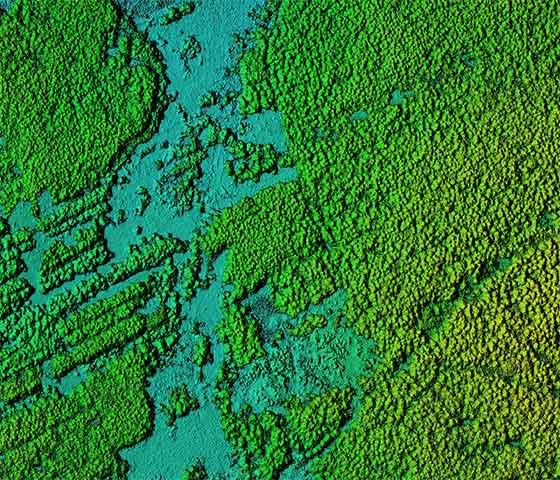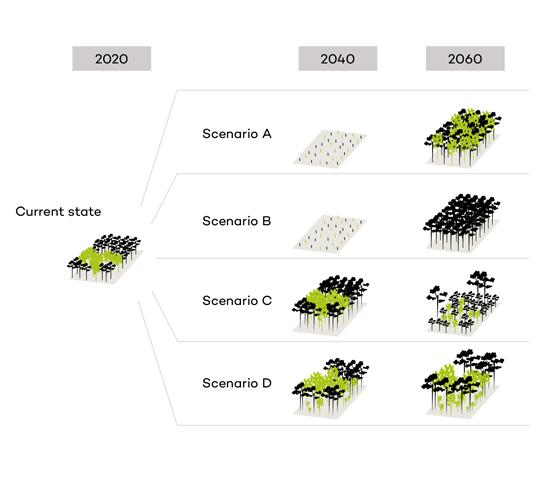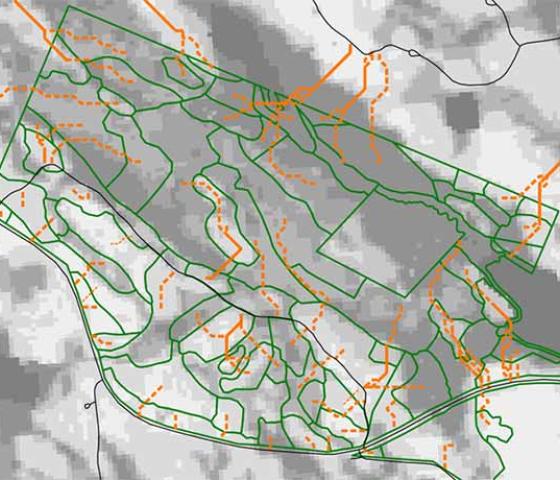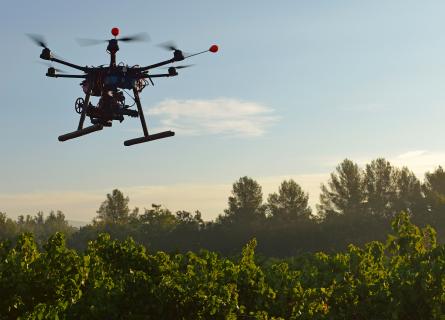
Forest Modelling
Accurate growth and development modelling is the starting point for sustainable forest management planning. Our services cover the whole chain, from inventory analysis to long-term asset development scenarios and optimised tactical management plans.
Forest modelling services
- Inventory analysis and growth modelling
- Strategic forest management planning
- Tactical forest management planning
Our analysis services help you get more reliable estimates of forest development. We have a long track record in creating and calibrating models to measurement datasets, analysing data quality and providing insight into inventory plans. Simulations can be run from a single tree to the stand level, with a wide range of data.
Example scenarios:
- How does planting density affect seedling survivability?
- How does seedling origin affect growth?
- How reliable is my current growth model?
- How is my sawlog yield affected if we change the accepted log dimensions?

A strategic forest plan allows a clear understanding of the long-term timber yields as well as the required silvicultural and harvesting operations. Strategic plans also serve as the basis of forest asset valuations. Long-term planning tools delineate management paths to ensure sustainable productivity and reveal carbon sequestration impacts.
Optimisation finds the best possible combination of harvests and silvicultural operations while considering the current forest structure, growth conditions, business objectives and sustainability criteria.
Example scenarios:
-
Stable wood flow
-
No clearcuts
-
Maximise the net present value
-
What rotation length should we apply?
-
How many thinnings should we apply during a rotation?

Hauling optimisation and road usage analysis
Which timber should I sell to which mill? Which stands are best suited to fill mill orders? How many trucks will be driving on a specific road this year? Where should I allocate road maintenance operations?
Harvesting operation clustering with spatial optimisation
Which stands should I harvest to deliver an agreed amount of timber this year? What stands can be harvested in a single harvest site, and which road network should I use to transport the timber? Can the harvests be scheduled so that the harvester can stay in one place for as long as possible?
Spatial optimisation forms operation clusters to give you a good baseline for planning more efficient harvesting operations.

Forwarding route calculation
Is the current road network sufficient to reach all stands, and which stands are not accessible? How long are the forwarding distances to get timber from the stand to roadside storage? What is the roadside price of each stand?
Carbon impacts of harvesting
How big are the emissions from my planned harvesting and hauling operations? Could they be reduced?
-
Understand the long-term opportunities and management requirements of your forest assets
-
Improve operational efficiency by utilising spatial optimisation
-
Correctly align your forest management with your objectives and values
-
Compare your present operations to an optimal management plan and identify what to improve
-
Forest investors
-
Timberland managers
-
Forest industries

AFRY Smart Forestry Products
AFRY Smart Forestry uses innovative software, state-of-the-art forestry technology and modern forestry techniques to improve forest management operations. Our products provide reliable information by mapping, optimising, monitoring and continuously learning about the forest supply chain's life cycle and functions.
We provide forest modelling services using our own AFRY Smart Forestry Software.
FAQ
From a forest owner’s point of view, the purpose of forest management planning is to support the owner in managing the forest according to the owner’s values and objectives.
In strategic planning, the time horizon for planning typically spans many decades. The purpose of the strategic planning process is to decide the objectives of forest management, list the management alternatives and find the optimal management alternative.
Typical decision-making aspects in strategic planning are sustainability of timber production, maximising net present value, growing the standing stock, maintaining the forest as a carbon sink, and protecting the habitats that the forest provides for a wide range of organisms.
A forest’s long life cycle puts strategic planning at the heart of its management. Key stakeholders require plans which feed on vast amounts of data and delineate the most sustainable and profitable pathway for the future.
Tactical planning aims to implement the objectives decided in the strategic plan. A tactical plan is usually formulated for 3-15 years and answers questions about what, where and when operations should be done. When selecting harvest or silviculture timing, it is crucial to consider both the attributes of the management unit and its location.
An optimised tactical plan seeks to select the timing and intensity of treatments in the best possible way for the individual management unit and to minimise operational costs by forming harvest clusters that are treated simultaneously. Balancing the management of individual and surrounding management units requires spatial optimisation tools.





